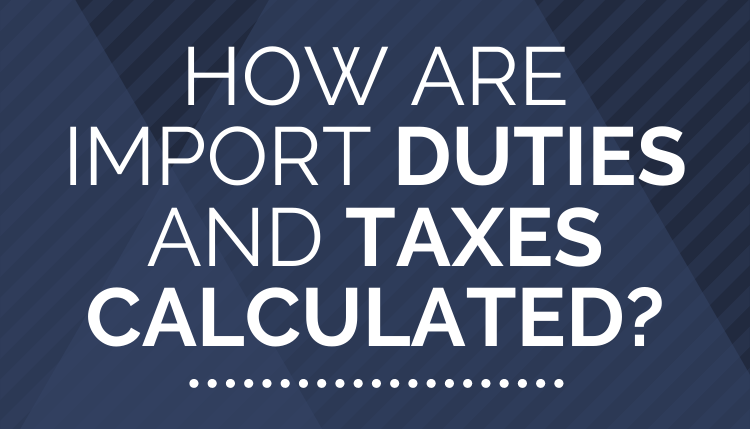Those curious about how import duties, tariffs, and taxes are calculated can find out more in this condensed guide.
Duties, tariffs, and taxes are something that all importers are familiar with. These government expenses are calculated using specific and regulated methods.
How Import Duties and Tariffs are Calculated
Step 1: Determine the duty percentage rate on the goods you’re shipping. This rate varies depending on the destination country. To find the duty rate, visit the U.S. Customs and Border Protection website’s trade tariff page. Duty rates can be found by using an HS code or product description.
Step 2: Calculate the duty on your shipment. Once you have the rate, you can calculate the duty amount on a shipment. Add up the goods’ value, freight costs, insurance, and any additional costs, and multiply the total by the duty rate. The result is the amount of duty you’ll need to pay Customs for your shipment.
(Value of Goods + Freight Cost + Cost of Insurance + Additional Costs)
* Duty Rate = Total Duty Amount
How Taxes are Calculated
Step 1: Determine the sales tax (VAT) rates of the destination country. VAT is a sales tax that applies to the purchase of goods and services and must be fulfilled by the importer.
Step 2: Calculate the Value Added Tax. To calculate the VAT of a shipment, add up the goods’ value, freight costs, insurance, import duties, and any additional costs. After, multiply the total by the destination country’s applicable VAT rate.
(Value of Goods + Freight Cost + Cost of Insurance + Additional Costs)
* VAT Rate = Total Value Added Tax
The result is the amount of VAT (Value Added Tax) that will need to be paid to Customs for the shipment.
What are Duties, Tariffs, and Taxes Based On?
The amount of duties and taxes owed for a shipment are determined by many factors including:
- The HS code is used to classify the product type. Customs uses this code to quickly understand what is being shipped and apply relevant taxes, duties, and regulations.
- The goods’ value, including freight and insurance fees, helps Customs determine the duties and taxes for a shipment. For this reason, it’s essential to state the correct value on a commercial invoice.
- The goods’ description on the commercial invoice helps determine duties, taxes, and tariffs. To assure that the goods are classified correctly, the HS code and the goods’ description should match.
- International trade agreements can influence the amount of taxes and duties owed on a shipment. Those shipping goods between nations that share a trade agreement may be exempt from duties or eligible for a reduced rate.
- The Incoterms on the commercial invoice define the agreement between seller and shipper about who pays for shipping costs, including taxes and duties.
If shippers are missing information, it’s up to Customs to calculate the duties and taxes on their shipment, which may result in you paying more than they should.
When are Duties and Taxes Paid on a Shipment?
Duties and taxes must usually be paid before the goods are released from Customs in the destination country. Carriers may be able to pay on the shipper’s behalf to ensure that goods are released quickly, and then they invoice the shipper for the charges.






![[Webinar] How Could Changes to De Minimis Impact Your Company?](https://traderiskguaranty.com/trgpeak/wp-content/uploads/2025/05/trg-how-de-minimis-impacts-customs-bond-webinar-400x250.png)
